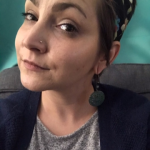10 Tips to Writing True-Life Stories
Today’s guest post is by Brit Haines.
Writing true-life stories is cathartic. The process is healing, and authors often say they come out of the experience feeling like they went through an intense therapy session. But digging deep to produce these nonfiction stories hurts too, especially if you focus on a traumatic experience.
The pain can be enough to make you want to stop, to wonder if publishing the story would even engage your readers. Never let it hold you back. If you can think of it as motivation to move forward, your account could touch the lives of readers just like you.
Follow these ten basic tips to speak your truth. Here’s how to write true-life stories that resonate with your audience.
1. Dig Deep
Find a story worth telling. Readers see your emotion on the page. It’s safe to say that a tear-jerking moment in a book came from real-life author tears.
2. Remove Yourself
One of the hardest parts of writing a story about yourself is taking an objective look at your life. To do so, you must altogether remove your ego.
Take yourself out of the equation. Look outward at everyone else, at the bigger picture. Reflect on the experience, and decide which lessons are fitting for a book.
3. Start Small

Writing a book is a huge undertaking. It can seem daunting.
Begin by free writing for a few minutes each day. Focus on a single memory as a writing prompt and write without thinking. Consider this a journal exercise if you wish. Try focusing on a short 24-hour period of your life.
Later, you can build upon these memories to form your narrative. Even if you don’t use any of the material in your book, the process develops a writing habit. It also keeps memories fresh and helps you explore moments in time you may have previously considered insignificant.
4. Work in the Details
Like the setting of your story, your life’s details affect you in significant and meaningful ways. We’re not often aware of just how much the little things affect us. But the particulars build a clear picture for readers.
Add details to your book, such as appearance, smells, the culture, and the character’s moods and enjoyment (or lack thereof). Consider how the setting contributes to your overall experience.
5. Research, Research, Research

Regardless of how you start writing your story, research is inevitable. Facts can help you get started if you’re unsure what life story is worth telling or build on memories to create a well-rounded story.
No matter how credible you are, memories are fickle. They’re not to be trusted alone because we don’t remember everything correctly. Life stories from your childhood are even more challenging to tell alone.
When researching for a book about your life, focus on who may know the facts. Ask family or people close to you for details. List the memories you’re not sure about, and see if you can find any research that fills in the context you may lack.
6. Speculate Freely
You won’t always find the information to fill gaps in your life story. Sometimes you have no idea what another person’s motives were and can no longer ask them. Memories are foggy, or no one knows the real details. You can’t make claims about situations that are a mystery to you. This is when you add speculation.
Speculate honestly on what you can’t make sense of for the story’s sake. Write something like, “I’m not sure why my grandmother decided to steal thousands of dollars from her husband, leaving it all to her troubled daughter after her death. I often wonder if she loved the rest of us at all. Maybe she was as flawed as the rest of us.”
Use words and phrases like “I wonder,” “maybe,” and “perhaps” to make your intentions clear.
7. Structure the Plot
Retelling true stories are familiar in nonfiction and novels. Both differ in how the story is told, but they also stick to a time-tested structure. The best stories have a beginning, middle, and end. You need a problem, solution, and climax.
Real life is formless and confusing by comparison, so you must face challenges in creating the plot. Refrain from writing a story exactly as it happened.
Focus instead on how you can structure life into a dramatic and believable plot. Organize the plotline so your audience feels the story. An outline is beneficial for staying on track, helping you develop a clear message, and forming writing goals.
8. Ask for Permission
Just because it happened doesn’t mean you can publish it. That said, you have a right to your own life stories.
If you’re writing a true story, you must ask for permission. Fictional narratives based on a true story may go either way. Writing in fictional characters who resemble real people is a way around asking for permission, but only if they are not recognizably similar.
Contact your family and friends to ask their permission before adding elements of their lives into your story. Get it signed too. Otherwise, you’ll want to change names and other personal details to protect their privacy.
9. Pick Your Genre
Real-life stories most commonly fall under the non-fiction genre, including memoirs, essays, autobiographies, and motivational or self-help books. But you can also construct them into fiction or creative non-fiction.
Each genre differs. For example, memoirs focus on a memory or specific time like battling cancer or traveling to Europe. Autobiographies follow your entire life. By comparison, a collection of short stories or essays includes memorable moments without an overarching narrative.
And then there’s fiction. If your family refuses to grant permission, you may want to consider turning the story into fiction for legal reasons.
Choose the genre right for your book. If you’re uncertain, search through Amazon’s book categories to understand where your story fits.
10. Edit Ruthlessly
Don’t feel you have to include every character or event. Be selective and edit without inhibition. Set events in shorts time frames, rearrange the timeline, cut what doesn’t add to the story. Cut or alter scenes if no one makes a choice, discovers a motivation, suffers, or learns something. Keep the vital parts of the plot and the characters essential to the story.
Remember, you have artistic license to make changes to your life if it means creating gripping stories.
 Brit Haines is a professional freelance writer, editor, and writing coach who loves books. She holds a bachelor’s degree in English Language and Rhetoric from the University of Missouri-Kansas City. Connect with her at her website, which is full of writing tips for authorpreneurs, and follow her on Twitter .
Brit Haines is a professional freelance writer, editor, and writing coach who loves books. She holds a bachelor’s degree in English Language and Rhetoric from the University of Missouri-Kansas City. Connect with her at her website, which is full of writing tips for authorpreneurs, and follow her on Twitter .
Featured Photo by Mariana Medvedeva on Unsplash












Thanks so much for sharing this! You always post valuable things for us writers, and I share them in all my FB writing groups.
Thanks for sharing, Jack! I’m glad my guest post resonated with you.
If I may ask, Can you add me in those groups? I want exposure & learning new things
Please!!
Please let me share this post with my Advanced Writing class.
Please do! Thanks, Rae.
Writing from real-life events can give you quite a lot of benefits. You have the freedom to fictionalize the facts. You will not have to limit yourself to find a good structure or a good ending as it is already given.
True. But creative nonfiction or even memoir often includes re-arranging events to create a better story flow or structure. It’s really up to the writer. Thanks for reading, Lydia!
To be a nonfiction writer entails a lot of responsibility, and above all that mentioned, you need to turn a plain text into striking prose.
That’s right, and these tips can help writers find the memorable in their story/stories. Thanks for sharing, Scott.
This is a very interesting and effective tip. It’s the capacity to carry occasions and characters to a goal that attracts me to composing, particularly composing for kids. I would prefer not to at any point be pedantic, yet in the event that there’s something I would like to say, it’s that you can bring things around. You can roll out an improvement. Grown-up books are tied in with giving up. Youngsters’ books are tied in with getting it together.
I have been a victim of a crime in the 90s and the man is now free from prison and I want to tell my side of the story. Do I need his permission to use his name?
“Depression. The Love Thief”
Thanks for the great insights, I’m just about writing my first book, this will really help, please can I be added to any of your groups please 🙏
You can subscribe to my blog and newsletter, and if you would like personal help, consider one of my coaching or mentorship packages!